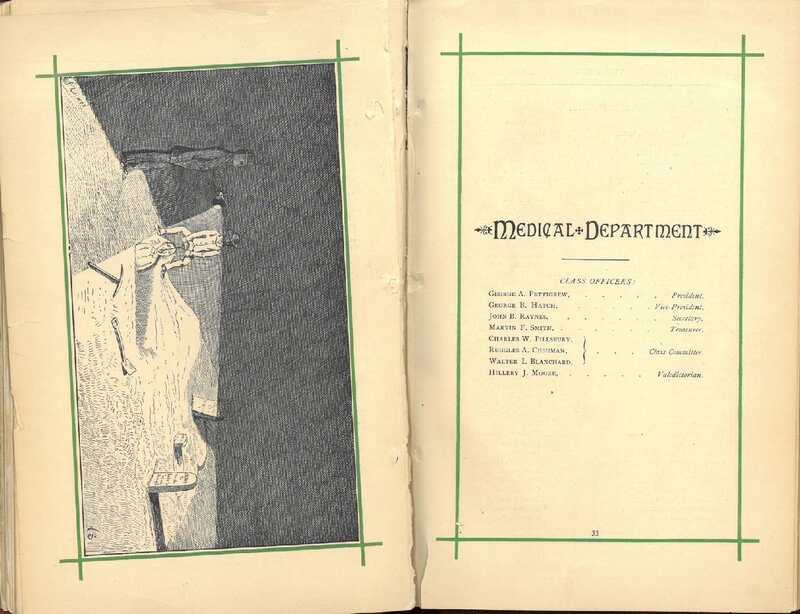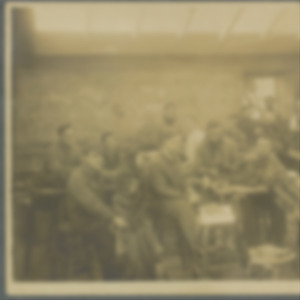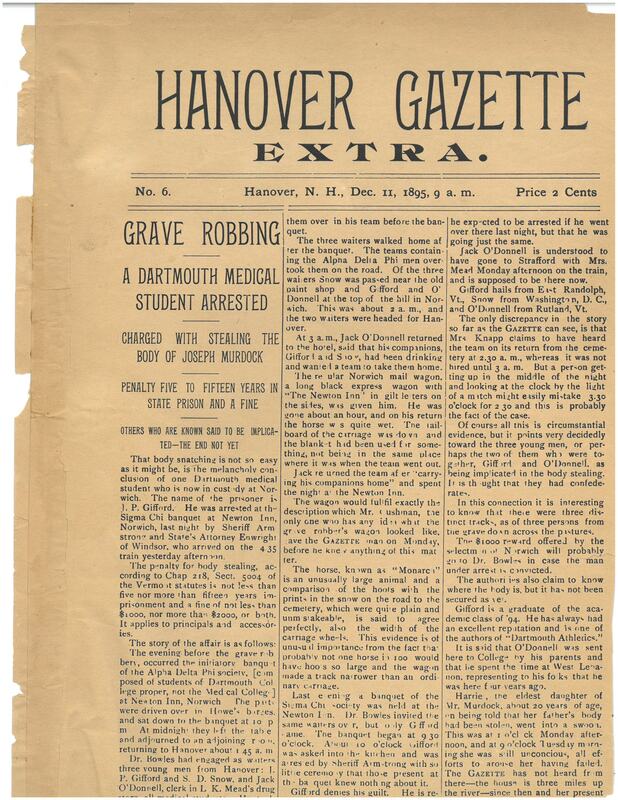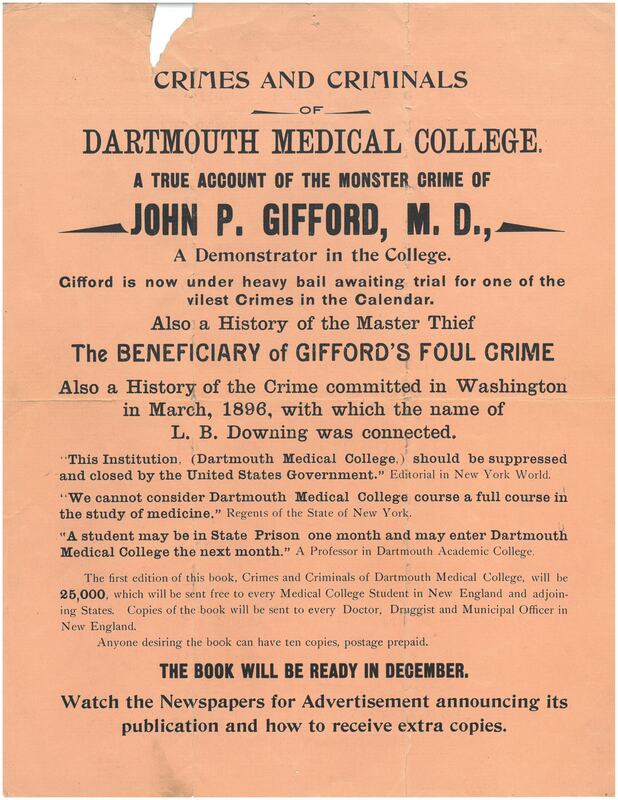1796 - 1910s: "Crimes and Criminals of Dartmouth Medical College"
The Dartmouth Medical School was founded in 1797 by Nathan Smith who, in 1796, petitioned the Board of Trustees of Dartmouth College for permission to travel to Edinburgh, Scotland to "attend to the several branches of medicine as taught & practiced there" and then return to establish the first medical school in New Hampshire. (For more on the founding of the medical school, check out this episode of the Hindsight is 20/19 podcast.) As news of the probable establishment of a medical school spread in New Hampshire, local residents grew concerned about one particular aspect of having the school and its students in their midst: where would they obtain bodies for anatomical dissection?
This concern led to the timely passage of "An act to prevent persons from digging up the bodies of dead people," approved by the State of New Hampshire on June 16, 1796. The law made graverobbing illegal and set the penalty at a fine of up to $1,000, up to one year in prison, or up to 39 lashes at a public whipping. However, the law did make one exception: the body of a criminal could be removed for dissection provided that the person removing the body had a signed certificate from a justice in the county. The knowledge that your body might be dissected after your death was intended as a deterrent against crime, a fate worse than death. In fact, the only federal law ever enacted relating to the supply of cadavers was passed in 1790 and permitted federal judges to add dissection to a death sentence for murder (Hulkower, 2011).
Nevertheless, it was rather an open secret that graverobbing was a primary way in which cadavers were obtained for anatomical study during the medical school's first century.
The act of graverobbing and the cadavers themselves were treated with very little respect by the medical students of that era. In the 1882-1883 edition of The Aegis, the list of class officers of the Medical Department is published opposite a drawing of two men stealing a body from a grave in the dead of night. A photograph of anatomy students circa 1905 shows the men posing with three cadavers, one of which has been propped up and is holding a broom. These practices led to some very public legal issues, including the notable arrest of student J.P. Gifford for stealing the body of Joseph Murdock from a Norwich, VT cemetery in late 1895 (if that name sounds familiar, it's because the medical center in Randolph, VT would eventually come to be named after J.P. Gifford).
However, there were rarely significant consequences as a result of being caught and and the students did not take the risk of legal trouble seriously. In an apology letter written by a group of medical students after one such incident, the students wrote that "...when we contemplate our fellow Citizens, in the neighboring villages, trembling for the relics of their dead, which, they have long been educated, to hold sacred; the unlawful removal of which, in their view, can be nothing short of sacrilege." It is clear that this particular group of students felt that the reaction of the locals to having bodies removed from their cemeteries was a result of their lack of education and superstitious "trembling for the relics" of their deceased neighbors.




